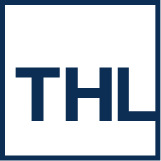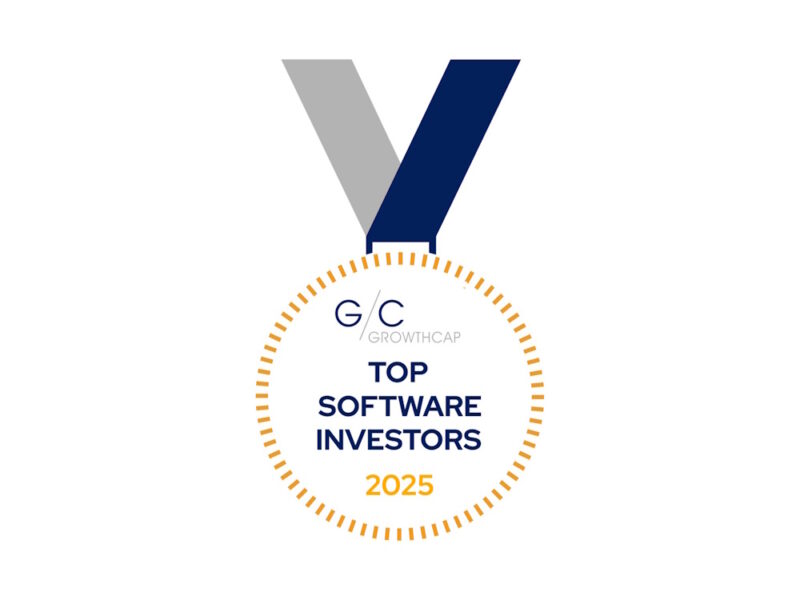Insight & Analysis | Technology & Business Solutions (TABS)
What It Takes to Scale AI

10 Practical Insights from THL’s 2025 GenAI Innovation Day
Key Takeaways:
- As generative AI continues its rapid evolution, many companies are still grappling with what AI strategy and tools are best.
- At THL’s 2025 GenAI Innovation Day, portfolio company leaders shared wins and lessons learned from their own AI implementations.
- Themes that emerged—from governance and orchestration to bottom-up culture and adoption—offer a practical blueprint for AI implementation at scale and across sectors.
Generative AI is moving fast—often faster than most companies can keep up with. A McKinsey survey from early 2025 found 92% of organizations plan to increase AI investment in the next three years, yet fewer than 1% consider themselves “mature” in deployment.
Which solutions and use cases deliver the best ROI? How does AI integrate into existing systems and workflows? How do we put the right guardrails in place to ensure responsible usage and data security? What does it really take to build a scalable AI strategy? The list goes on.
At THL’s GenAI Innovation Day, portfolio companies lifted the curtain on their AI transformations, sharing what’s working and what’s not. Ten key themes emerged—capturing the current state of AI adoption across industries and offering a blueprint for sustainable progress.
1. Getting Ready
Before deploying any AI tool or strategy, companies must assess their institutional readiness. Having the right foundations in place—both technical and organizational—will lead to smoother and more successful rollouts:
- Make sure data is accessible and high quality
- Build secure system infrastructure to protect data and ensure compliance
- Establish process and governance protocols to keep everything in check
- Approach change management head-on by preparing employees and encouraging experimentation across the organization
2. AI Adoption Is a Journey
In a perfect world, AI adoption would follow the “if you build it, they will come” playbook—but reality is more complex. At GenAI Innovation Day, participants shared similar stories of piloting various AI strategies and working toward scaled adoption. The bottom line: long-term success hinges not on tools alone, but on how well people use them. Effective adoption requires building trust, celebrating internal champions, and learning from failures.
“The organization and management are key here and you’ve got to come up with several ideas to promote adoption,” said Pawanjit Singh, Chief Information Officer, Centria Health. “We did hackathons, we looked at adoption reports, we talked to people who were doing very well and those were not using it at all. We recognize people who are actively using it. It’s a journey.”
“Technology is only one part of the solution. People have to use it,” added Lou Kratz, Senior Principal Engineer, Bazaarvoice. “To change culture… champion thoughtful failures, turn AI discussions into stories and conversations—not top-down mandates—and time-box your experimentation. If you see good results, great, invest. If you don’t, you failed fast, so it’s not a huge loss and the thoughtful learnings are worth the failures.”
Consider partnering with internal comms and marketing teams helped accelerate adoption—by turning success stories into inspiration, surfacing early wins, and reinforcing the idea that GenAI is an evolving, participatory effort—not just a top-down tech rollout.
3. Unlearning and Relearning
New technologies have been reshaping the way we work for decades. Encouraging adoption goes hand in hand with encouraging progress. In other words, finding new and better ways of doing things.
“I think you’ve just got to unlearn how you have been doing things in the past, re-learn a different way, and use AI for augmentation,” said Singh.
Sure, there are the inevitable hesitations and learning curves that come with any new technology. But if history has taught us anything, the companies that win are the ones that embrace experimentation and empower their people to innovate. Even considering how to weave AI adoption and appropriate usage into employee’s reviews can yield benefits.
4. Trust but Verify
Two phrases kept coming up throughout the day: “trust but verify” and “human-in-the-loop.”
AI is powerful, yes, but it still requires human oversight. Given they are probabilistic systems, wrong or misleading answers are inherent to its design. Where AI can enhance speed and efficiency, human engagement can catch errors, apply judgment, and add nuance. For example, a customer service chatbot might handle routine customer questions, but when an issue gets more complex or emotional (e.g., outside the AI’s training distribution), the system flags it for human review. Or in a developer setting, AI tools can quickly generate code snippets, but engineers will still review for errors before deploying.
These approaches ensure that AI supports—but doesn’t replace—human expertise and accountability.
5. From Centralized AI to Copilot Culture
Across the portfolio, companies are moving away from top-down deployments toward a more decentralized and democratized bottom-up AI culture—where innovation starts with the people closest to the work. Putting AI tools in the hands of non-technical users accelerates adoption and helps direct investment toward what actually works. Read real-world examples of this from THL portfolio companies in “The AI Copilot Culture.”
6. Agentic AI Is the Next Frontier
Agentic AI—systems that can plan and execute complex, multi-step tasks with minimal guidance—is the latest industry focus. AI agents can handle time-consuming tasks like scheduling interviews, summarizing documents, routing support tickets, and managing onboarding workflows, which have the opportunity to drive meaningful efficiency and efficacy within an organization.
Gartner predicts at least 15% of day-to-day work decisions will be made autonomously through agentic AI by 2028 (up from 0% in 2024) and that 33% of enterprise software applications will include agentic AI by 2028 (up from less than 1% in 2024). While it’s too early to measure the bottom-line impact of agentic AI today, companies are cautious but optimistic. Learn how THL’s portfolio companies are embracing this new wave of AI in “Agentic AI at Scale.”
7. Low-Code Options Drive Value—Fast
Deploying an AI strategy doesn’t mean relying on your engineering team for months on end. After getting AI ready, low- and no-code solutions like Dify, Crew AI, and Clay can help companies get customized tools off the ground quickly and without relying fully on engineering. Lou Kratz leveraged Dify to create a battle card generator that sales reps can use to create competitive proof points in under two minutes. Singh built the prototype of a voice AI interview tool in just four days. Read more about these examples in “The Copilot Culture” and “Agentic AI at Scale.”
8. Process Orchestration is Essential
As AI usage scales—from copilots to fully autonomous agents—so does the need for thoughtful orchestration. Without clear systems to manage workflows, handoffs, and tool interactions, even the best AI solutions can create chaos. Several speakers emphasize the importance of building frameworks that track agent responsibilities, monitor dependencies, and ensure outputs are aligned with business goals.
“If you have a bunch of agents and other AI tools running rampant in your organization, you need someone to orchestrate and understand what they’re doing, how they’re doing it, and where they’re going,” said Zachary Coles, Managing Director, Ashling Partners.
9. … And So Is AI Governance
AI governance works in tandem with process orchestration. As companies scale AI, they need clear guardrails around access, data use, quality assurance, and oversight. Effective governance helps organizations track what’s being built, who’s using it, and how it’s performing. The goal isn’t to limit innovation, but to support it with the right checks, visibility, and accountability. As a starting point, look for AI tools that offer governance features and establish an internal governance committee to keep things on track.
“Most AI platforms that are worth their salt have data governance built in,” said Kratz. “We’re always concerned about who has access to what data – you don’t want someone in engineering to see feedback managements are giving HR about their team members, for example.”
10. Build, Buy, or Both? There’s No One Right Answer
Whether you should build or buy AI capabilities depends on many factors, like in-house expertise, project complexity, budget and more. Many of THL’s portfolio companies use hybrid models—building lightweight, context-specific tools on top of third-party infrastructure.
Looking Ahead
If there’s one takeaway from GenAI Innovation Day, it’s that sustainable AI success doesn’t come from tools alone—it comes from the people, processes, and culture surrounding them.
“It’s not about chasing every new technology,” said Mark Benaquista, Managing Director, THL. “Rather, it’s about investing in readiness, championing bottom-up innovation, and designing process and governance models that support responsible growth.”
“Several themes emerged around AI at our Innovation Day,” said Alex Sabel, Vice President, THL. “What stood out just as much was the momentum. The energy in the room was high and the conversations made it clear: companies are moving quickly, fueled by a shared urgency and strong spirit of collaboration.”
To learn more about how THL and its portfolio companies are embracing genAI, visit www.THL.com or contact our team today.
About GenAI Innovation Day 2025
In June 2025, THL—together with AWS—hosted its first-ever GenAI Innovation Day at AWS’s Boston office, bringing together nearly 50 product, technology, and AI leaders from across the portfolio. The day-long event was part of THL’s broader push to foster collaboration and knowledge-sharing around AI implementation. It serves as a hands-on complement to the firm’s quarterly AI roundtables. To learn about other topics discussed at Innovation Day, read “Agentic AI and Scale” and “The AI Copilot Culture.”
—
Mark Benaquista, Managing Director, SRG
mbenaquista@thl.com
Jagjit Singh, Director, SRG
jsingh@thl.com
Alex Sabel, Vice President
asabel@thl.com
What it Takes to Scale AI
- Verticals
- Technology & Business Solutions (TABS)
- Verticals
- Technology & Business Solutions (TABS)



